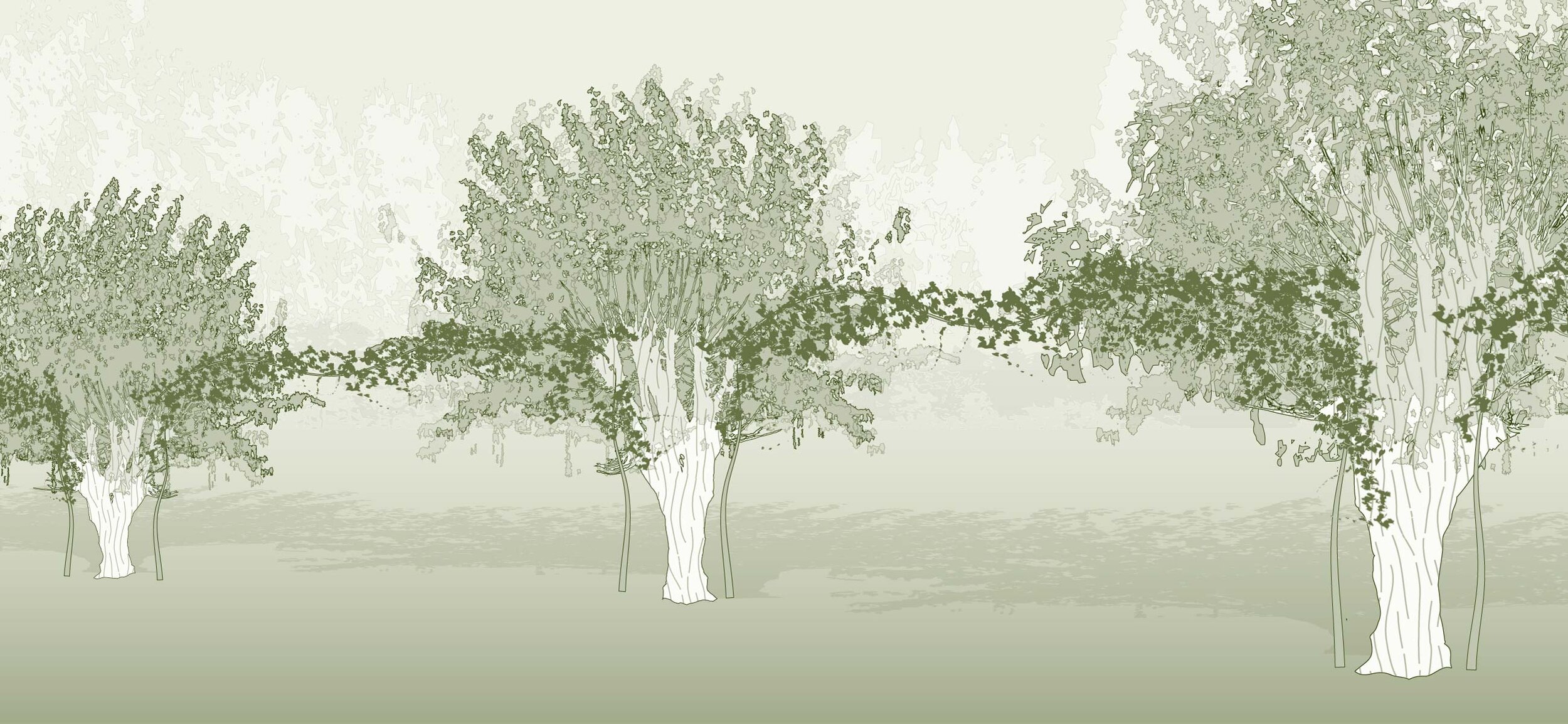
About
Agroforestry
Agroforestry developed as a set of indigenous land-use practices over thousands of years across our global community. The interventions utilize trees, crops, and livestock in intimate combinations to produce positive ecological, social, and economic outcomes. In the United States, agroforestry systems are defined in the following ways: alley cropping, forest farming, riparian buffers, silvopasture, and windbreaks.
Agroforestry is utilized within productive niches of a farm, and rarely applied to a whole farm or forest system, and often operates outside the government entity definitions. A useful typology considers tree location, the agroforestry system, and land use classification divided between forest and agricultural. Agroforestry practices are identified and managed within systems.
Silvoarable Systems
The intentional integration of trees with crops.
Agricultural Landscapes:
Alley cropping
Defined as rows of trees and/or shrubs planted in a spatial arrangement creating alleys where crops are grown, alley cropping includes orchard intercropping, trees planted with annual intercrops, and alley coppice.
Photo credit: Meghan Giroux
Forested Landscapes:
Forest farming
The cultivation of shade-tolerant crops grown under the protection of a tree canopy that is often modified and managed to provide appropriate growing conditions.
Photo Credit: Katie Commender
Silvopastoral Systems
Management systems that intentionally combine trees with forages and livestock in the same land unit. The results of this interaction can provide economic and ecological gains.
Agricultural Landscapes:
Silvopasture
(Pasture conversion to silvopasture )
This practice, which includes orchard grazing, is established by adding trees to fields or pastures and introducing livestock.
Photo Credit: C. Commons
Agrosilvopasture
A practice infrequently used in the northeastern United States that utilizes sequential mixtures of silvoarable and silvopastoral systems.
Photo Credit: M. Giroux
Forested Landscapes:
Silvopasture
(Forest conversion to silvopasture)
Created by reducing the canopy of a forested landscape, establishing forages, and grazing livestock.
Photo Credit: J. Orefice
Linear Agroforestry
Trees between parcels
Agricultural Landscapes:
Hedges
Lines of closely spaced shrubs and sometimes trees creating a barrier or marking a boundary between adjacent properties with and without silvicultural applications.
Photo Credit: G. Treece
Riparian Buffers
Established adjacent to watercourses, riparian forest buffers contain shrubs, trees, and other permanent vegetation. In addition to providing conservation benefits, plantings can produce harvestable crops that can provide economic benefits.
Photo Credit: J. Munsell
Windbreaks & Shelterbelts
Single or multiple rows of trees or shrubs established for environmental and economic purposes.
Photo Credit: M. Giroux








